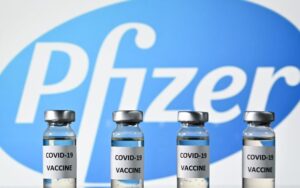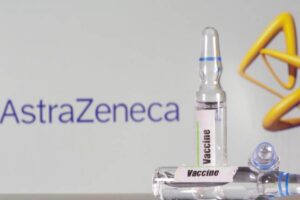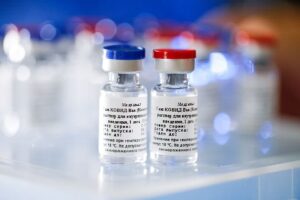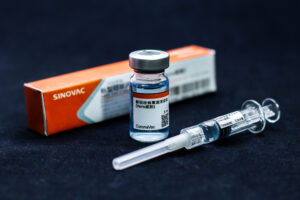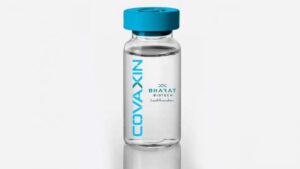Race for Covid-19 vaccine enters last lap: Which vaccine stands where
The last few days have seen several big guns in global pharmaceutical industry announce that they are seeking emergency use authorisations from key drug control authorities across the world, indicating that they are ready for a commercial launch. We look at which vaccine stands where with key factors such as efficiency, price, production targets as well as challenges for each vaccine.
Pfizer & BioNTech
Of the several developers of candidate vaccines for the ongoing Covid-19 pandemic, the US pharmaceutical company Pfizer Inc and its German partner, BioNTech have become the first to formally ask the US Food and Drug Administration (FDA) for emergency use authorisation for their Covid-19 vaccine.
Efficiency: Pfizer’s application for emergency use authorisation of its Covid-19 vaccine comes just days after final trial results showed the vaccine was 95 pc effective in preventing coronavirus with no major safety concerns.
Production: The companies say that the first batches of the vaccine would be available for the high-risk people in the United States before end of the year. It hopes to produce 50 million doses this year and 1.3 billion in 2021.
Price range: It is likely to price the vaccine at USD 20 per dose, the wholesale price it has negotiated with the United States government. Pfizer is also negotiating with the European Union for a similar bulk purchase agreement.
Challenge: The biggest challenge for Pfizer is that its vaccine needs to be stored at an extremely low temperature of -70°C, ruling it out of wide distribution in India due to the lack of adequate cold chain facilities.
Moderna: m-RNA-1273
Another US BigPharma firm Moderna has also completed its phase 3 trials and is likely to follow Pfizer in seeking emergency use authorisation from the US FDA within days.
Efficiency: Moderna has reported a similar efficiency of 95 pc of its candidate vaccine, much above the minimum threshold of 50 pc set by the US FDA.
Production: Moderna expects to produce upto to 20 million doses this year and can ramp up its production to 500 million doses in 2021.
Price: Moderna says its vaccines would be priced in the range of USD 10-50, with 100 million free doses as per the contract with the US government which gave USD 1 billion for the development of this vaccine.
Challenge: Though unlike Pfizer, Moderna needs its vaccine to be stored at -20°C or the normal household freezer, its higher price could be a dissuasive factor.
AstraZeneca: Oxford vaccine
The British pharma giant is on the heels of its US rivals in the race to develop and deploy vaccine against Covid-19. It is developing the vaccine in collaboration with Oxford University. India’s Serum Institute, the world’s largest vaccine manufacturer is likely to produce a significant share of the vaccine.
Efficiency: AstraZeneca’s phase 3 trial results show that while half a dose, followed by a full dose was 90 pc efficient, two full doses were only 62 pc effective and overall the vaccine has been rated at 70 pc efficiency.
Production: AstraZeneca expects to produce over 100 million doses this year through its agreement with Serum Institute of India. It expects to produce a total of 3 billion doses in 2021 in various facilities for a global distribution.
Pricing: AstraZeneca will supply 300 million doses of its vaccine to the United States government at only USD 4 per dose. The company, which is part of the World Health Organisation’s Covax initiative aimed at distribution of two billion vaccine doses to 92 low-and middle-income countries at no more than USD 3 a dose. Neither Pfizer nor Moderna has joined the initiative. Earlier this week, AstraZeneca also said it will provide vaccines at cost “in perpetuity” to low-and middle-income countries in the developing world.
Challenge: Unlike Moderna or Pfizer, AstraZeneca’s vaccine does not require special cold storage facilities and can be stored in a normal household refrigerator. Its biggest challenge will perhaps lie in producing adequate volumes rapidly enough in order to meet its commitment to not only the US, UK or the EU governments but also the global markets.
Gamaleya Research Centre: Sputnik V
One of the surprise, early entrants in the race to develop a Covid-19 vaccine was Russia with its vaccine called Sputnik V, named after the famous Russian satellite launched in 1957.
Efficiency: While the first statement had declared the vaccine to be 91.4 pc effective, 28 days after the first dose. Forty-two days later, after a second dose, data showed “an efficacy of the vaccine above 95 pc.”
Production: Russia has already signed deals with India and China for mass production of the vaccines and it is now taking up discussions with Brazil and South Africa. It has not stated its production targets yet, but hopes to produce over 1 billion doses next year.
Pricing: Russia says it will price the vaccine at below USD 10 per dose in the international markets and it will be free for Russian citizens.
Challenges: Though Russian health authorities have been monitoring the vaccine, there were some concerns about its production capacity especially as early production was hit by concerns over the stability of the serum. On the other hand, storage and handling of the vaccine is expected to be easier as it can be stored in normal refrigeration, like the AstraZeneca’s vaccine and unlike Pfizer or Moderna.
Sinovac Biotech: CoronaVac
Less than six months after the first case of coronavirus was detected in Wuhan, China began to work on developing vaccines against the potent virus. Of the four vaccines reportedly under development, Sinovac Biotech’s CoronaVac seems to be most advanced.
Efficiency: Sinovac has begun extensive clinical trials in many nations around the world. The results of the mid-stage trials were encouraging especially for generating a quick immune response. Some estimate its efficiency to be over 90 pc as well.
Production: China has already set up a plant to manufacture 300 million doses, while negotiations are on with various other nations including Indonesia and India for setting up manufacturing units.
Pricing: Like most other vaccine manufacturers, Sinovac is offering the vaccine to emergency workers in China. Though its global price has not yet been made public officially, the vaccine is expected to be priced in the range of USD 10-15.
Challenges: China’s frayed ties with several nations, notably India, the United States and even Brazil may be a stumbling block for CoronaVac to find global acceptance.
Bharat Biotech: Covaxin
Bharat Biotech, which is developing an Indian vaccine, says it expects to launch its vaccine, Covaxin, in second quarter of next year. It has recently begun phase III or clinical trials in collaboration with Indian Council of Medical Research on 26,000 volunteers across the country.
Efficiency: The company says it expects a minimum efficiency level to be around 60 pc, above the 50 pc mark that has been set by US FDA, the World Health Organisation as well as the Indian health ministry.
Production: Along with other Indian pharmaceutical companies like Biological E and Indian Immunologicals, the company hopes to produce well over 100 million doses a month.
Pricing: In May, Bharat Biotech had said its vaccine would be priced below INR 100, so that it remains affordable for all Indians. However, of late it has gone silent on the issue of pricing.
Challenges: Since it may enter the market much after its rivals including the fairly competitively priced vaccine by AstraZeneca-Oxford University, Bharat Biotech risks to miss the first flush of vaccination. Moreover, if the pandemic is over by the time Covaxin hits the market, Bharat Biotech may be looking at a large quantity of vaccines that it must dispose of within a short period.


